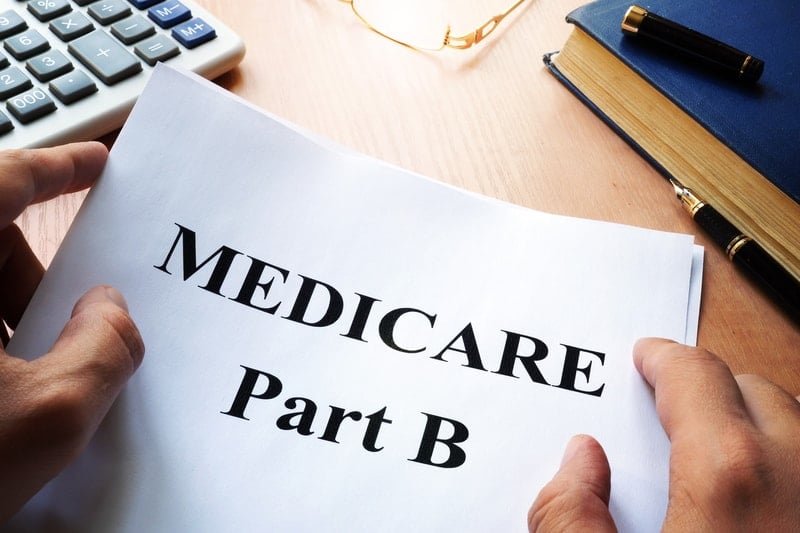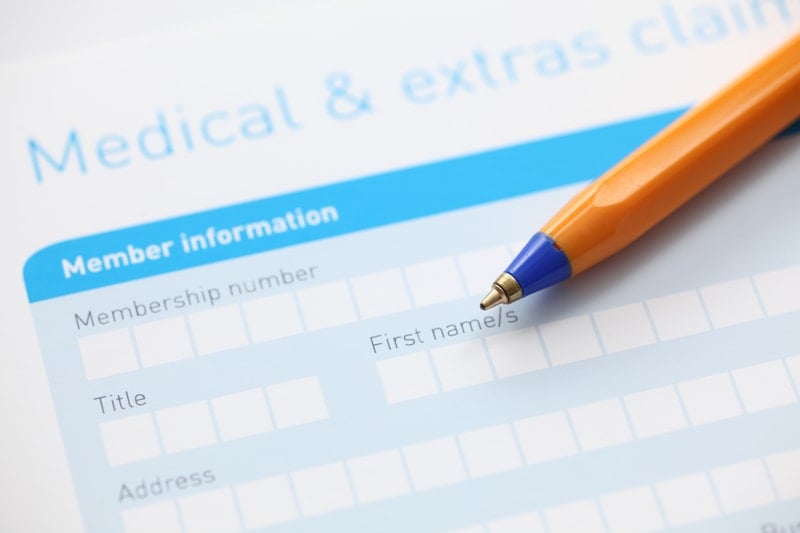.png)
In this day and age, it’s becoming increasingly more difficult for people to pay their medical bills. Whether it’s a simple visit to the doctor’s office or a major medical procedure, most people have no idea where they’ll be financially after everything is said and done. And there’s certainly no exception when it comes to purchasing oxygen therapy devices like home oxygen concentrators, portable oxygen concentrators, or CPAP and BiPAP machines.
Usually, the first thing people ask when they contact an oxygen concentrator company is, “are portable oxygen concentrators covered by Medicare?” Although you can seek reimbursement for oxygen equipment from Medicare, it’s important to note that they won’t always accept your claims. Unfortunately, as important as oxygen therapy devices are in people’s lives, insurance companies often see them as “luxury items.”
On the other hand, private health insurance company policies vary widely, so you’ll need to get in touch with them to see how it works. However, even when they do cover oxygen therapy devices, you often need to be covered by a specific plan or meet a set of criteria before they will help pay for it.
It’s important to know exactly what your options are when it comes to purchasing an oxygen concentrator or a similar oxygen therapy device so that you can save as much money as possible and don’t end up with the short end of the stick. In the following sections, we’ll outline all you need to know about medicare, private health insurance, and purchasing an oxygen therapy device. Follow the links below to skip to relevant sections of the post.
- Health insurance terms
- Does Medicare cover oxygen equipment?
- Filing a claim for out-of-pocket expenses
- Saving money on oxygen equipment
- Conclusion
Health Insurance Terms You Should Know

Before you get started with purchasing an oxygen therapy device, there are several terms that you need to become acquainted with that will help you out when filing a claim with your health insurance company. Although it’s pretty straightforward for the most part, Medicare and private health insurance companies may use different terms to describe the same concept.
{{cta('fa8abc2a-1e88-4fa3-82fd-1cb5b9ed43b2','justifycenter')}}
General Healthcare Terms
Deductible
A deductible is the amount that someone must pay for medical services or products before the insurance company will begin to pay for them. However, depending on your plan, there may be exceptions to this to cover things like preventative care.
Premium
The premium is the amount of money you are paying monthly, quarterly, or yearly in order to maintain your Medicare or private health insurance coverage. Be sure to check with your Medicare provider, private healthcare provider, or employer to learn about any increases in premiums.
Copayments
Copayments are fees that you pay for certain medical supplies or services. These are usually a set cost and can be used to pay for things like doctor’s visits. This should not be confused with coinsurance which is the percentage of a total payment you are required to pay after a deductible is met.
Oxygen Equipment Terms
Durable Medical Equipment (DME)
Durable medical equipment is the term that most companies use to describe long lasting and reusable medical equipment that allows an individual to function on a day-to-day basis. This includes mobility aids like walkers, wheelchairs, and handrails, as well as electrical items including scooters, ventilators and nebulizers, blood and glucose monitors, oxygen concentrators, and CPAP machines. Terms like home medical equipment (HME) and healthcare equipment are often used interchangeably with DME.
DMEPOS
This is an acronym that’s only used by Medicare and stands for Durable Medical Equipment, Prosthetics, Orthotics, and Supplies. Although this is a broader term that incorporates more medical supplies, it’s effectively the same thing if you’re just in the market for an oxygen concentrator.
Home Medical Supplies
Although “home medical supplies” sounds an awful lot like “home medical equipment,” this term usually refers to single use disposable items such as diabetes test strips and other incontinence supplies.
Assistive Technology (AT)
The term “assistive technology” is commonly used by the independent living community but describes essentially the same thing as durable medical equipment. According to the Assistive Technology Act of 1998, assistive technology is:
“any item, piece of equipment, or product system, whether acquired commercially, modified, or customized, that is used to increase, maintain, or improve functional capabilities of individuals with disabilities.”
Does Medicare Cover Oxygen Equipment?
Medicare does cover oxygen equipment as long as certain criteria are met. Since oxygen equipment is considered “durable medical equipment,” it’s covered under Part B of medicare. However, even after all criteria are met, you will still be paying for a portion of the device that you’re purchasing or renting.

Like with any type of insurance, Medicare will find any excuse they can to deny you coverage, so it’s important to be meticulous in the way that you approach seeking reimbursement for your medical purchases — simply contacting a Medicare provider and asking them to pay you will never work.
Generally, in order to seek reimbursement for oxygen equipment, you will need a medical report that shows you need supplemental oxygen to treat a condition or to maintain healthy blood oxygen levels. Remember that the more documents you have showing your need for supplemental oxygen, the less likely you are to be turned down for financial reimbursement.
Once you reach your deductible, Medicare will pay for 80 percent of the Medicare-approved amount and you will pay the remaining 20 percent out of pocket. The Medicare-approved amount is the sum of money that Medicare agrees to pay a provider for medical items or services.
Medicare will help pay for oxygen equipment and supplies when the following conditions are met:
- Your health will improve with oxygen therapy
- Your arterial blood gas levels are low
- Alternative treatment measures have failed
- Your doctor has confirmed that you have a severe lung disease like COPD, asthma, or pneumonia.
What’s more, your doctor will need to write and sign something called a certificate of medical necessity (CMN) or DME Information Form (DIF). This form helps to document the necessity and coverage criteria for DMEPOS items. Your supplier will need this document before a claim can be submitted for Medicare.
When these criteria are met, Medicare will pay for the following:
- Systems that provide oxygen
- Containers for storing oxygen
-
Oxygen contents and accessories used to deliver oxygen such as tubing and cannulae
Is Every Type of DME Covered Under Part B?
Unfortunately, the catch that many people don’t realize at first is that just because Medicare will help you pay for oxygen supplies doesn’t necessarily mean they will pay you for the one you want. There are a lot of different types of oxygen devices on the market including oxygen tanks, portable liquid oxygen tanks, oxygen concentrators, portable oxygen concentrators, and CPAP and BiPAP machines.
Although every health insurance company is different, most tend to only offer reimbursement for the bare minimum. While oxygen therapy has constantly been evolving over the years, providing patients with more effective portable oxygen devices, Medicare and many private companies will likely only pay for oxygen tanks. However, if certain criteria are met, you may be able to receive an oxygen concentrator on an extended rental basis.
Renting Oxygen Equipment
If your doctor determines that you need a more advanced oxygen therapy device like a portable or home oxygen concentrator and provides adequate documentation, Medicare will enter into a contract with your medicare-approved provider. This contract will allow you to rent an oxygen concentrator for 36 months until the contract needs to be renewed with updated medical information.
It’s very unlikely that Medicare will help you pay for a portable oxygen concentrator but if your condition is severe enough, you may be able to get a home oxygen concentrator. Monthly payments made by Medicare will help pay for things like oxygen machine maintenance, servicing, repairs, as well as accessories like cannulae and oxygen contents.
Steps To Filing a Claim For Out-of-Pocket Expenses
In many cases, your medical equipment provider will file a claim on your behalf as long as they have the necessary documentation and information. However, if for some reason they aren’t able to, you will need to know the steps to filing a claim whether it’s through Medicare or a private health insurance company. You should file your claim within a year of the date that you paid for the medical expenses out of pocket to ensure that you’re reimbursed in full.
Download and Fill Out the Patient Request Form
In order to get started filing your claim for out-of-pocket expenses, you need to fill out the Patient Request for Medical Payment form found here. This form is updated regularly, so it’s important to check back with Medicare.gov for the most up-to-date version. If you’re filing a claim with a private health insurance company, be sure to visit their site for the appropriate form.

With the claim, you’ll also need to provide the itemized bill from your healthcare provider, doctor, or supplier, a letter detailing your reason for submitting the claim, and any other supporting documents.
Submit Your Form
Medicare and most insurance companies will allow you to fax your information or send it by mail, but it’s important that you check on the form to ensure you’re sending it to the correct location. If it’s sent to the wrong location it may delay the process or it may never get into the hands that it needs to in order to be processed.
Track Your Claim
If you’d like updates on your claim, most health insurance companies have a way of tracking it through their website. If not, you can contact member services if you have any questions about your documents or reimbursement. Reimbursement time is usually around 30 days but it can vary.
Healthcare Common Procedure Coding System (HCPCS)
HCPCS is the coding system used by all healthcare companies including Medicare. These codes are used to classify every single task, service, or item that you may receive from a healthcare practitioner or supplier. These are updated regularly so be sure to check online and make sure the correct codes correspond with the ones on your invoice and your claim.
How To Save Money On Oxygen Equipment
If for some reason Medicare or your private health insurance doesn’t help you pay for your new oxygen therapy device, there are many other options available to you. Unfortunately, many insurance companies will exhaust all their available options to prevent your from getting the products or services you need for an affordable price. And nobody should have to feel like they’re putting a strain on their financial well-being, especially with something that concerns your physical health.
Take Advantage of Financing Options
Exploring your financing options is one great way to reduce the financial burden when paying for a home oxygen concentrator, portable oxygen concentrator, or CPAP machine. If you know which oxygen machine you want but aren’t able to pay for it upfront, you can split your payments into smaller and more manageable monthly payments.

Please note, however, that if you choose to finance your oxygen device, you will need to have your credit approved beforehand. If your credit is declined, you can always finance through a family member or friend who has good credit.
Buy from the Right Company
Although it may be tempting to go on Amazon or eBay and purchase the first oxygen concentrator you find, this is never ideal and can put you in a bad situation financially if the device malfunctions and you have no warranty or no one to speak to about getting it fixed.
On the other hand, buying directly from the manufacturer may mean paying higher prices for the oxygen concentrator that you want. Fortunately, distributors like LPT Medical offer such low prices that the manufacturers won’t allow us to advertise our best prices. Speak with a respiratory specialist to learn more about our pricing.
Consider Second Hand Oxygen Concentrators
Buying a used oxygen concentrator can save you a significant amount of money and can be an effective means of getting the exact device that you set out to buy without breaking the bank. Lightly used or second hand oxygen concentrators, especially those from reputable brands like Inogen and Philips Respironics are known to last a long time. The good news is that when newer oxygen concentrator models release, there’s often an influx of used machines in stock that you can choose from.
{{cta('43b79c5e-6bd6-4f02-ac27-2d038d20c146','justifycenter')}}
Conclusion
Medicare and private health insurance companies often make it difficult or impossible to get the funds you need to pay for an oxygen concentrator. Although they’ll typically pay for the bare minimum such as an oxygen tank or portable oxygen tank, this may not be what you want or need.
Portable oxygen concentrators, on the other hand, afford you the mobility and assurance you need to live life to the fullest without anything holding you back. It’s our primary goal to help you achieve this by offering you plenty of options to make paying for a portable oxygen concentrator more affordable, convenient, and reasonable.
Give us a call at 1-800-946-1201 or reach us by email at info@lptmedical.com if you have any questions about Medicare, financing options, or pricing.

